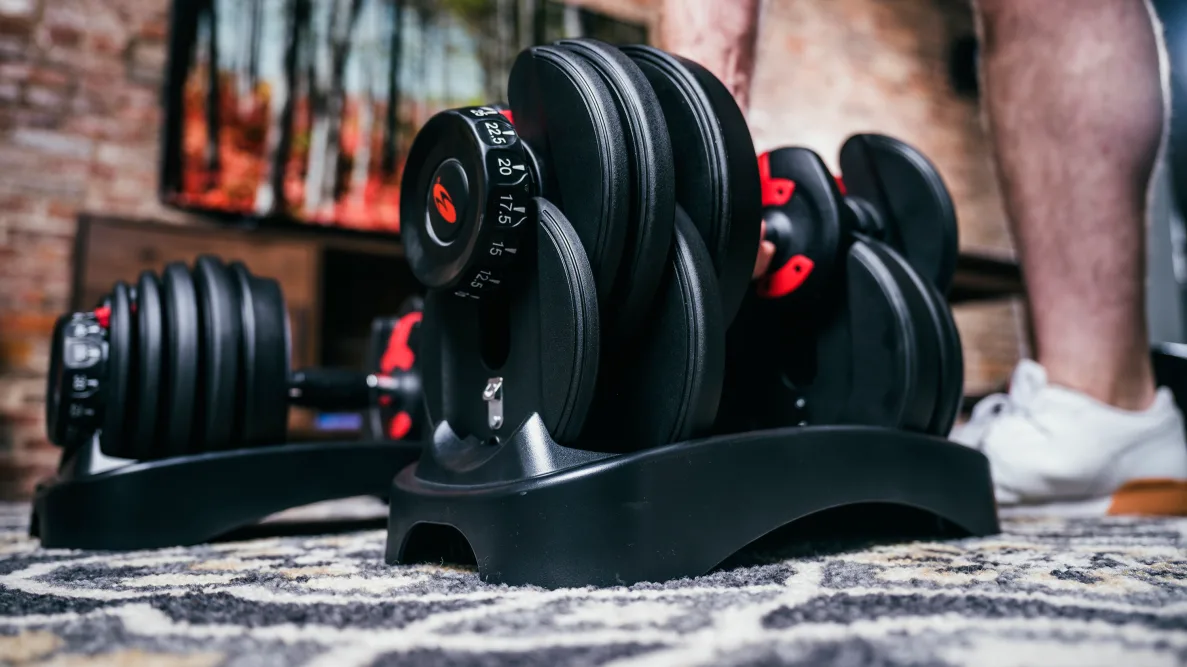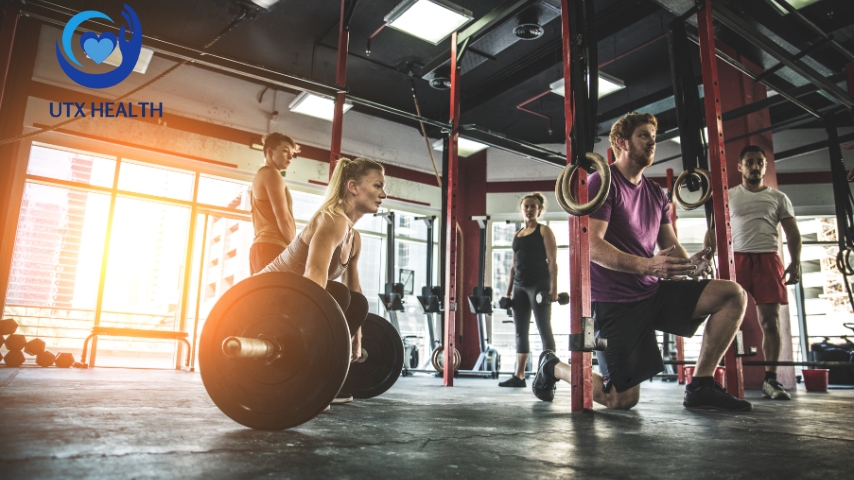Behaviour, thus, plays a crucial role in the levels of fitness a person reaches and tends to make a difference between success and failure in health-related goals. While genetics and physical capability provide a base, it is daily habits that a person creates that really outline the path of our journey in discuss the role of behavior in physical fitness levels-from our eating habits to our exercising habits; it is our behaviour that drives us to effectively take care of one’s body through physical activity and a healthy lifestyle.
They learn how motivation, self-discipline and goal-setting positively alter his or her life. Positive behaviors-regular exercise, healthy eating, and rest-can lead to a sustaining and rewarding fitness lifestyle that enhances the well-being of an individual. Contrarily, negative habits decrease performance and may lead to frustration and/or setbacks.
With that in mind, we explore the role of behavior in physical fitness levels and how one could evoke healthier habits in today’s discussion. Understanding the relationship between behavior and your discuss the role of behavior in physical fitness levels level can enable you to proactively work toward a healthy lifestyle and maximize your potential even further. In this, we participate in practical ways and insights to transform your approach to fitness through positive behavioral change.
Discuss the Role of Behavior in Physical Fitness Levels

In today’s fast running world, physical fitness has become an essential element of one’s life. Growing cases of obesity and chronic health issues have made it really crucial to learn about elements of physical fitness. In these elements of physical fitness, the behavioral aspect of a person accounts for much in knowing about his discuss the role of behavior in physical fitness levels. While genetics and environment certainly play a part in fitness, more often than not, it is our daily habits and choices, as well as attitudes toward health, which will determine the achieved results. Visit here!
This article examines many ways behavior enters into physical fitness levels and stresses the importance of positive habits and the psychological factors that drive them. Knowing this relationship can be useful in understanding how to implement strategies that will improve one’s physical fitness through better habits for enhanced physical health and, thus, a better quality of life.
Physical Fitness Foundations
To contextualize discuss the role of behavior in physical fitness levels, one has to know what it is in the first place. Physical fitness has been commonly described as a state that enables one to perform daily tasks with energy and alertness without too much fatigue. It carries several factors with it, including:
Cardiovascular Endurance: The capacity or efficiency of the heart and lungs to supply oxygen to the muscles during sustained physical activity.
Muscular Strength: The greatest force that a muscle or muscles can exert in one effort.
Muscular Endurance: The ability of a muscle or group of muscles to sustain the activity, over a period of time, without excessive fatigue.
Flexibility: The range of movement available to a joint
Body Composition: The relative percentage of body fat compared to lean mass.
While training and physical activity are significant in developing these aspects, behavior is the innate drive that allows individuals to constantly engage in such practices. For instance, frequent exercise, proper nutrition, and adequate rest are all behaviors that greatly influence one’s physical fitness level.
Behavioral Aspects of Physical Activity
Improvement of physical activities depends on physical fitness, which is basically the cornerstone of discuss the role of behavior in physical fitness levels development. On the other hand, the dedication to an active lifestyle often depends upon behavioral elements. Some valued behaviors that are likely to affect the levels of physical activities include:

Fitness Goal Setting: One of the most important motivating factors involves setting realistic and achievable goals on discuss the role of behavior in physical fitness levels. According to behavioral psychology, setting specific, measurable, achievable, relevant, and time-bound-precise, or SMART-goals-is a way to greatly commit to physical activity. For example, other than saying that one wants to “get fit,” a SMART goal would sound like, “I will exercise for 30 minutes, five times a week, for the next month.”
Self-Motivation: Intrinsic motivation-the motivation to do an activity for its own sake-is especially crucial regarding continuation of exercise behavior over time. Individuals who enjoy exercising or feel that exercising is a personal challenge are more likely to continue their exercise. The development of a positive attitude toward physical activity will strengthen self-motivation and lead to better outcomes.
Routine and Consistency: The development of regular exercise makes physical activity no longer a periodic effort but a style of life. Results come with consistency, and behaviors promoting routine-scheduling workouts just like one would any other crucial appointment-can make all the difference in the road to better discuss the role of behavior in physical fitness levels.
Social Support: Regular exercises undertaken with friends, relatives, or members within the same community bolster motivation and a sense of responsibility. Supportive systems can motivate, build a sense of belonging, or even spur friendly competition-all leading to increased physical activity.
Overcoming the Barriers: Identification of personal barriers to physical activity is another important behavioral strategy. The majority of individuals report one of the three most common barriers to include time, access to facilities, and/or fear of injury. Problem-solving skills and a proactive approach to solve these barriers can enhance adherence to physical activity considerably.
Nutrition’s Impact on Fitness Level
Behavioral problems don’t relate to only physical activity but also to nutrition, which is of much importance in bringing betterment to physical discuss the role of behavior in physical fitness levels. Nutrition provides the fuel one requires for going out and exercising, recovering, and continuing a healthy lifestyle altogether. Some behavioral aspects of nutrition, which have an impact on discuss the role of behavior in physical fitness levels, are enlisted below.
Meal planning will help in the provision of an individual with a meal plan that has been curated based on desired fitness goals. Behavioral strategies involving advanced meal preparation, healthy snacking, and making healthy conscious food choices will assist in better nutrition and improved discuss the role of behavior in physical fitness levels.

Mindful Eating: It can be enhanced by increasing a person’s awareness of his or her hunger and fullness clues, developing better eating habits. Encourage people to eat slowly, enjoy their food, make conscious decisions on what they eat, and hence help them achieve their fitness goals.
Hydration: Adequate water in the body enhances good physical performance. Making it a habit to drink water throughout the day, especially before, during, and after working out, would make a huge difference in one’s level of discuss the role of behavior in physical fitness levels.
Nutritional Knowledge: A person should first of all know his nutritional needs regarding how active he has been or is going to be, regarding his current goals, and regarding his body composition. Knowledge of macronutrients, such as proteins, fats, and carbohydrates, and micronutrients, like vitamins and minerals, thus could empower individuals to make informed dietary choices to support their discuss the role of behavior in physical fitness levels.
Preventing Emotional Eating: Identifying and dealing with the emotional triggers of undesirable eating can greatly enhance nutrition. Finding alternative ways to deal with stress or emotional situations will prevent a vicious circle of emotional eating that supports discuss the role of behavior in physical fitness levels.
Psychological Factors Affecting Behaviour
There is an intimate relationship between physical fitness levels and behavior due to psychological factors. Identifying these influences can enable a person to use his or her mindset to achieve goals in discuss the role of behavior in physical fitness levels. Key psychological factors include:
Self-Efficacy: The belief in one’s capability to succeed with any given situation often makes a great deal of difference in behavior. Higher degrees of self-efficacy lead to greater amounts of effort and persistence in pursuit of fitness goals. Self-efficacy is established through small successes, positive reinforcement, and visualization techniques.
Mindset: Growth mindset is the belief that abilities can develop through hard work and dedication. This helps bring resilience, learning from failure, and move toward taking up challenges rather than avoiding them.
Stress and Coping Mechanisms: Stress acts as a crucial factor, which can act negatively upon motivation and adherence to exercising. Identification of effective coping strategies like exercise, meditation, or deep-breathing techniques reduces the influence of stress on discuss the role of behavior in physical fitness levels.
Behavior Change Theories: Numerous behavior change theories exist, such as the Transtheoretical Model (Stages of Change) and the Health Belief Model that guide how one can successfully bring about change in fitness-relateddiscuss the role of behavior in physical fitness levels. These theories can be used to create personalized strategies to enhance physical fitness levels.
Exercising Reward Systems: Incentivizing one’s self through a reward system for meeting goals in fitness can prompt individuals to stick to routines. Whether this is buying new workout gear or enjoying one’s favorite meal, healthy of course, that positive reinforcement can keep them committing to physical fitness.
Environmental Influences on Behavior
Other factors that help mold behaviors related to physical fitness involve those that emanate from the environment. The following are some environmental factors that either help or hinder discuss the role of behavior in physical fitness levels:
Availability of Facilities: Availability of gyms, parks, and recreational areas can facilitate physical activity. Communities that take care of their people’s health by giving them safe and accessible areas to exercise can go a long way in influencing the discuss the role of behavior in physical fitness levels of their inhabitants.
Social Environment: Friends’, family members’, and peers’ attitude and behavior can greatly influence the person’s attitude toward his or her fitness journey. Being surrounded by active and supportive people will create an encouraging environment for healthy behaviors.
Cultural Influences: Cultural beliefs and norms of fitness and body image shape behaviors related to physical activity and nutrition. Understanding such influences empowers the individual to move through their discuss the role of behavior in physical fitness levels with better awareness and intention.
Work Environment: This would include a setting that promotes physical activity at work, such as exercise classes, walking meetings, or standing desks. Employers could provide a leadership role in developing a culture of health within the organization.
Technology and Fitness Applications: The role of technology and applications in physical fitness has transformed the way people relate to physical fitness. Wearables tracking activities, heart rate, and calories burnt may motivate people to be more active. Fitness applications offering workout plans, nutrition tracking, and social support will increase accountability and commitment.
Development of Positive Behaviors towards Fitness
Knowing that behavior plays an important part in discuss the role of behavior in physical fitness levels provides the hindsight that is needed for actionable strategies that will bring about improvement. Some of the effective ways to cultivate positive behaviors that enhance fitness include:
Begin Small: Behavioral change is said to be somewhat overwhelming. Starting small, with doable changes, has been deemed helpful in instilling confidence and momentum. For example, one can start with small workout sessions or add in one healthy meal per day to result in longer-term sustainability of the habits.

Monitor Your Progress: Utilizing a workout journal or apps to monitor your workouts, nutrition, and progress can be quite enlightening and keep you honest with yourself. Monitoring progress may also enhance motivation and reinforce positive behaviors.
Create a Supportive Environment: Place yourself around others who share similar goals in the arena of discuss the role of behavior in physical fitness levels, and such an environment will be created-one that is supportive and encouraging to motivate you. You can do all this by taking group workouts, joining a class, or finding someone to become your workout partner for more accountability.
Enjoyment First: The more one enjoys the activities, the more it will tie in with longevity and adherence. Whether it is through dancing, hiking, or some other sport, enjoyment can make this area of life less of a chore and maybe even rewarding.
Know Your Stuff: Knowledge is power; understanding concepts about fitness, nutrition, and healthy behaviors empowers individuals with choices that support their goals.
Establish a Reward System: Setup a reward system for attained milestones in order to motivate and further reinforce good behaviors. The rewards can range from giving oneself a massage after attaining a certain level of fitness to indulgence without an ounce of guilt.
Practice self-compassion: One of the best ways to face setbacks and challenges is with a mind of self-compassion. Understanding that discuss the role of behavior in physical fitness levels for everyone will go up and down may make them feel guilty or frustrated. Hence, resilience and further commitment are surely fostered. Embed variety into activities: Routine work without changing the activity types can be boring. Therefore, try changing them whenever possible. Try to take a new class, exercise outdoors, or join some sport.
Visualization of success might be excellent forms of motivation and self-efficacy. The more time one spends envisioning themselves reaching fitness goals, the more solidly one believes in one’s self and the positive attitude toward oneself that one maintains.
Seek Professional Guidance: Employing a professional, like a personal trainer or nutritionist, will probably bring in expert guidance and support. This kind of expertise helps an individual to move with more clarity and confidence in their journey. Visit here!
After all, it is behavior that plays an indispensable role in physical fitness levels. While nutrition and physical activity are the two major components of fitness, choices, habits, and mindsets developed actually help influence our journey towards fitness. Understanding the psychological, social, and environmental influences on behavior can help individuals take appropriate measures to achieve better levels of physical fitness.
Colclusion
The emphasis on positive behaviors, the setting of realistic goals, and a supportive environment can empower people to be more capable of self-managing their health and lifestyle. As we move into an evolving world where discuss the role of behavior in physical fitness levels is becoming part of daily lifestyles, let’s keep in mind that the journey is never about reaching that number on the scale or finishing that one workout; it’s about living in a way that sustains you, incorporates health and happy times, and builds personal fulfillment.
By discussing behavior’s role in physical fitness levels, we are able to inspire and motivate our own and others’ choices toward a healthier, more active life. Whether one is just starting out on their discuss the role of behavior in physical fitness levels or looking to elevate his or her current routine, remember that all the little changes add up, often making very significant effects on one’s overall well-being. Utilize behavior’s power and unlock your full potential for a healthier, happier life.



